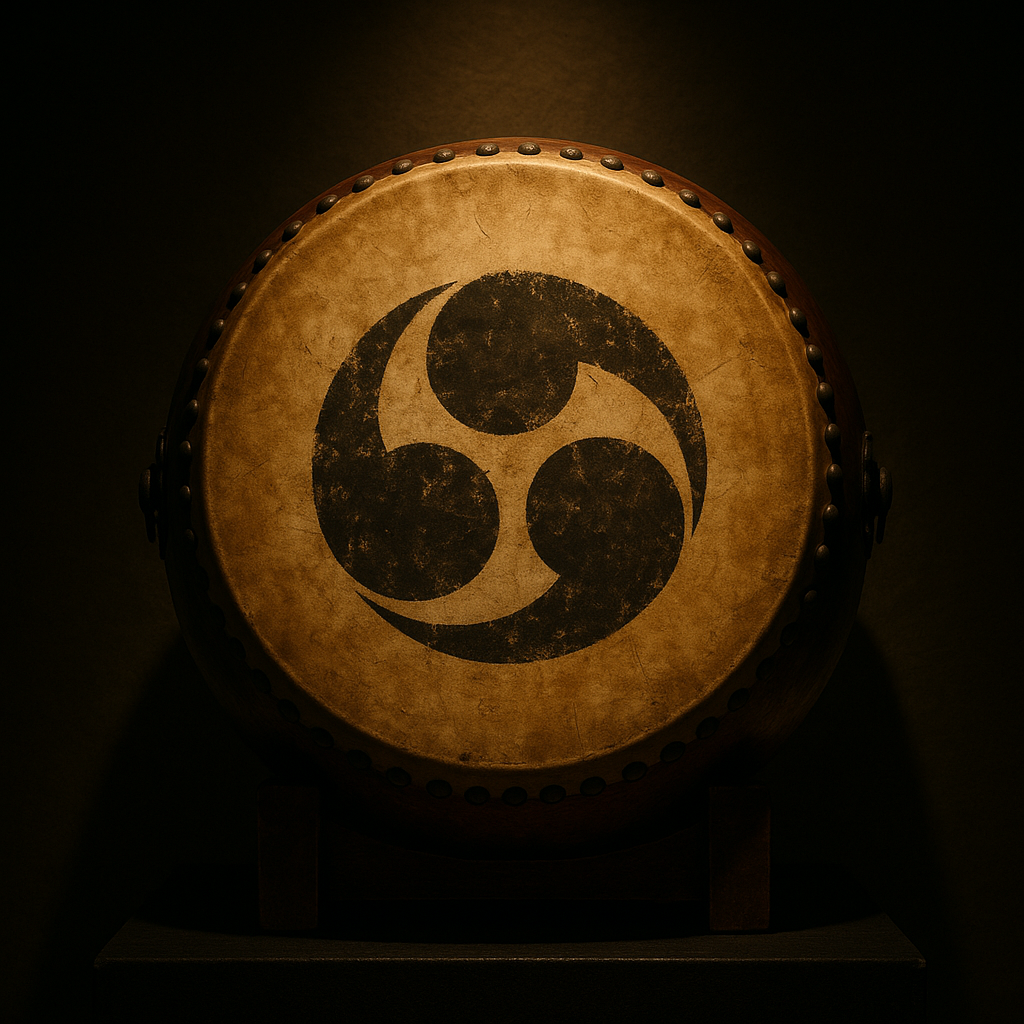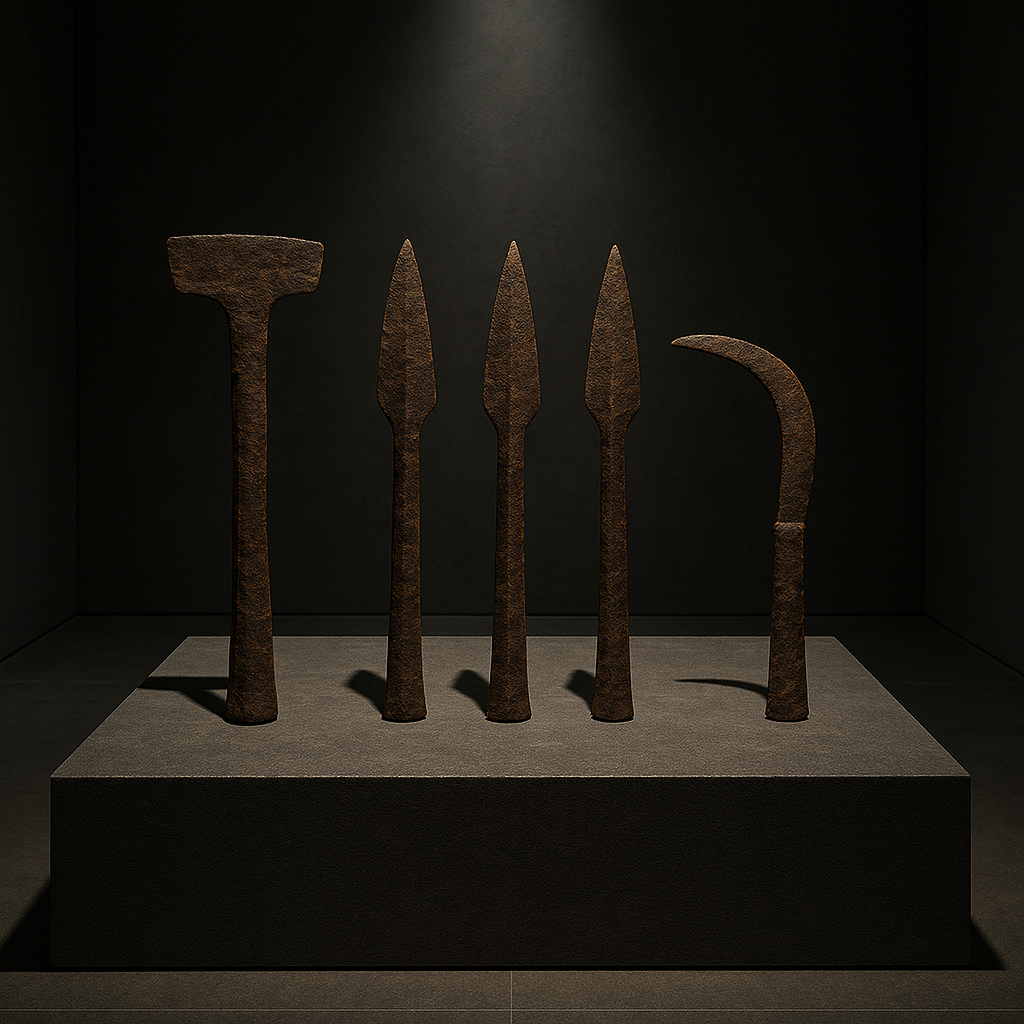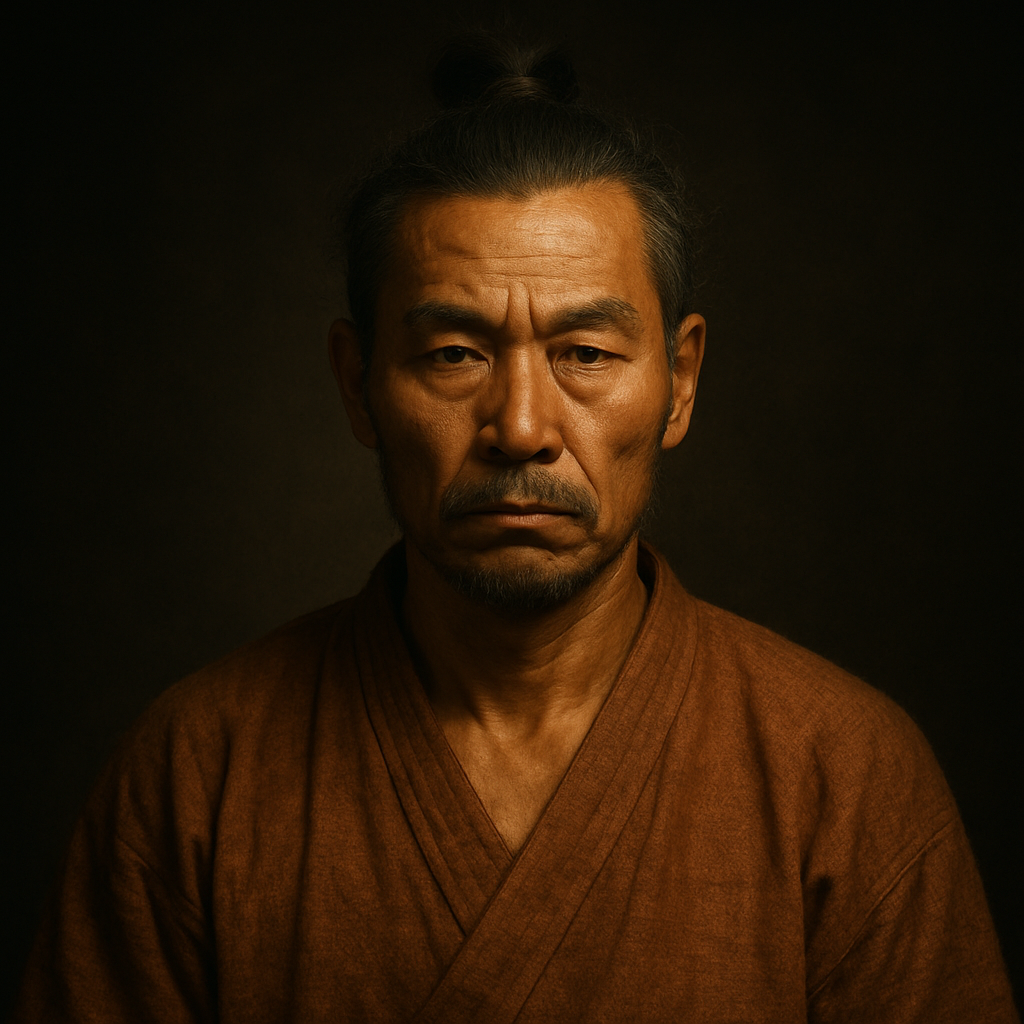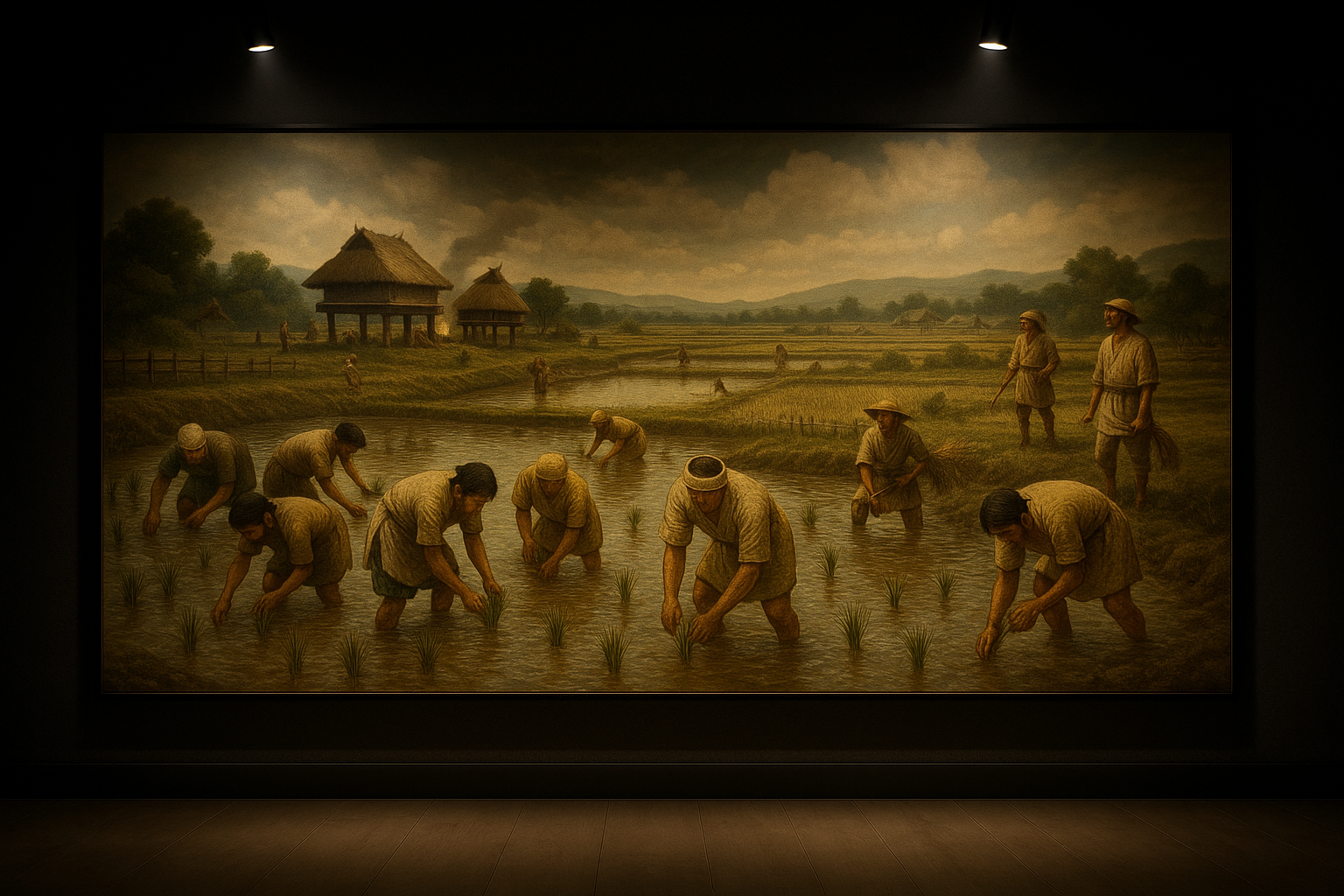
Yayoi Period
From Shell Mounds to Rice Paddy Empires: How the Yayoi Revolutionised Japan

From Shell Mounds to Rice Paddy Empires: How the Yayoi Revolutionised Japan

In our last adventure we paddled through the Jōmon epoch, a period of 12,000‑plus years when Japan’s earliest inhabitants lived off the land and sea, raised families in subterranean pit houses and decorated their pottery with rope‑like impressions. There were no emperors or samurai yet—just hunter‑gatherers gossiping over shell mounds and chasing deer with polished stone points. That world came to a close around the end of the first millennium BCE, when new ideas, new people and a simple grain called rice swept across the islands. The Yayoi period is both a sequel and a reboot: it carries forward some Jōmon traditions but upends others with agriculture, metallurgy and the first stirrings of statehood. This post explores the Yayoi era’s innovations, culture and legacy in the same humorous, story‑driven fashion as our Jōmon chronicle.

The term Yayoi comes from a district in Tokyo where archaeologists in the nineteenth century unearthed distinctive pottery and iron tools. Scholars debate when this cultural package arrived; some evidence from New World Encyclopedia suggests that rice paddies and pottery styles could date back as early as 900–800 BCE, though a more conventional start is around 300 BCE. The end of the period is marked by the emergence of kofun, large keyhole‑shaped tombs, around 250 CE. That roughly five‑hundred‑year span witnessed profound changes as immigrants from the Korean peninsula and continental Asia mingled with Jōmon hunter‑gatherers. These newcomers brought with them not only wet‑rice cultivation and bronze casting but also new languages, physical traits and social customs; archaeologists note that Yayoi skeletons were taller and had narrower faces than their Jōmon counterparts. The resulting culture is therefore a hybrid of indigenous and imported traditions.

Perhaps the most dramatic change from Jōmon times was the shift to wet‑rice agriculture. According to World History Encyclopedia, rice farming and metalworking were introduced near the end of the Jōmon period but became widespread during the Yayoi. New World Encyclopedia clarifies that irrigated wet‑rice culture came from the Yangtze estuary in southern China. Rice seeds were transplanted into flooded paddies, requiring canals, dikes and an understanding of local water cycles. Early Yayoi villagers also grew millet, beans and gourds, but rice soon dominated their diet. Communal granaries and wells were built near the paddies, indicating a leap in agricultural engineering. Why rice? Besides being delicious when paired with miso and pickles (culinary fusions came later), rice yields far more calories per acre than hunting wild boar ever could. With an improved food supply, the population surged to an estimated two million people—a staggering increase when you consider that the Jōmon population likely never reached half a million. As families no longer had to roam in search of chestnuts or shellfish, villages became permanent and expanded in size. The earliest houses were still pit dwellings reminiscent of the Jōmon, but over time these gave way to raised wooden structures that kept out moisture and rodents. Some of these granary‑style buildings evolved into the architecture of modern Shinto shrines.

The Yayoi period marks Japan’s first true Bronze and Iron Ages. World History Encyclopedia notes that although metalworking appeared near the end of the Jōmon period, Yayoi artisans quickly replaced stone tools with bronze and iron weapons, armor and trinkets. Stone‑bladed hoes were swapped for iron‑tipped spades to till rice paddies, and bronze bells (dōtaku), mirrors and swords became symbols of ritual authority. New World Encyclopedia emphasises that Yayoi pottery was technically advanced yet functional and minimally decorated, unlike the flamboyant cord‑marked ceramics of the Jōmon. Potters used the coil method to build long‑necked jars, wide‑mouthed pots and pedestal bowls, then smoothed and fired them to a russet finish. Some pieces featured knife‑incised or comb‑mark decorations during the early and middle phases, but later pottery was often left undecorated. Function triumphed over form—an early hint at the Japanese embrace of minimalism! Metal tools not only improved farming; they also reshaped warfare. Bronze spears, halberds and swords allowed clans to vie for territory and prestige, while bronze mirrors and bells served as ceremonial objects connecting people to the divine. Metal ore was scarce in the archipelago, so possession of bronze items signified high status. The first arms race in Japanese history was less about nuclear missiles and more about who had the shinier bronze bell.
Agricultural surplus enabled some Yayoi communities to specialise beyond mere survival. Trade blossomed; the World History Encyclopedia reports that settlements holding precious resources became trading centres and grew into the largest communities. The largest Yayoi site excavated, the Asahi settlement in modern Aichi Prefecture, covered about 200 acres. Imagine a bustling market with wooden warehouses, raised granaries and artisans hammering bronze while farmers barter for salt and cloth. Yayoi society was now plugged into regional exchange networks stretching into the Korean peninsula and China. Some villages were defended by ditches and palisades, hinting at inter‑tribal conflict. Others may have functioned as fortified trading posts, controlling resources such as iron or silk. New World Encyclopedia notes that the Yayoi made bronze bells, mirrors and weapons, and by the first century CE they employed iron agricultural tools and weapons. These technological advantages would prove decisive as clans jockeyed for power.
Yayoi society saw the emergence of social stratification. Owning metal objects, silk or glass indicated higher status. According to World History Encyclopedia, by around 100 CE roughly 100 clans existed; they battled for dominance but occasionally formed alliances, hinting at an embryonic political system. Taxes were collected and punishments administered, signalling the beginnings of government. New World Encyclopedia observes that as rice surpluses accumulated, a powerful elite class emerged. This elite commanded larger houses, more wives and the right of way on village roads (yes, even traffic etiquette has ancient roots!). The differences between elites and commoners extended into death. Burials for regular people were simple and often group‑oriented, whereas elites were interred separately with lavish grave goods. Sometimes the bones were exhumed, cleansed and painted with red ochre before being sealed in jars and buried again. The New World Encyclopedia describes square trenches surrounded by moats, over which low mounds were built as precursors to the later kofun tombs. These burial customs reveal both belief in an afterlife and a desire to display status even in death.
What did Yayoi people believe? Evidence suggests a polytheistic faith with numerous deities and seasonal festivals. Bronze bells, mirrors and weapons may have been used exclusively for ceremonial purposes. Graves were separated between commoners and elites, and certain rituals involved exhuming bones for reburial with red ochre. New World Encyclopedia adds that Chinese records from the third century CE describe the people of Wa (an early Chinese term for Japan) as clapping their hands in worship and building earthen grave mounds. Hand‑clapping is still a component of Shinto worship today, suggesting continuity from Yayoi times. While we can’t read their prayers, we can imagine that the first rice harvest was celebrated with feasts, songs and maybe a few jokes about who forgot to weed the paddies. Bronze bells likely rang during rituals, echoing across fields as families thanked the gods for rain and sunlight. The blending of new metalworking traditions with indigenous beliefs produced a unique spiritual landscape that would later inform Shinto’s reverence for natural phenomena and sacred objects.
Because the Yayoi left no written records, much of our knowledge comes from Chinese chronicles. The Han Shu, a history of the Han dynasty compiled in 82 CE, mentions Wa, describing a land of a hundred kingdoms that sent tribute through Korea. A more detailed account appears in the Wei Zhi (297 CE), which recounts a delegation from Wa in 240 CE. These records note that the most powerful clan was the Yamato, ruled by Queen Himiko, a shamanic leader who practiced magic in her spare time. She sent tributes to the Chinese emperor and was acknowledged as Queen of all Japan. When Himiko died in 248 CE, turmoil ensued until a relative named Iyo restored stability. New World Encyclopedia elaborates that the people of Wa claimed descent from King Taibo of Wu, a legendary figure from the Yangtze delta. Chinese envoys noted that Wa society collected taxes, maintained granaries, practiced vassal‑master relations and was marked by violent struggles. These descriptions align with archaeological evidence of stratified clans and fortified settlements. When Japanese emissaries arrived with bronze mirrors and bells as gifts, the Chinese might have admired the craftsmanship while still remarking on the visitors’ unusual tattoos or hairstyles.
By the third century CE, Yayoi society was coalescing around the Yamato clan in what is now Nara Prefecture. The increasing complexity of social hierarchy, accumulation of wealth and contact with the continent set the stage for the next phase of Japanese history: the Kofun period. The term “kofun” refers to the massive keyhole‑shaped tombs built for powerful rulers. These tumuli dwarf anything from the Yayoi period and contain elaborate grave goods, including bronze mirrors, iron weapons and horse fittings. The political system evolved into a proto‑state with centralized leadership, culminating in the establishment of the Yamato court and eventually the Japanese emperor line. World History Encyclopedia summarises the legacy of the Yayoi as the transition from small bands of hunter‑gatherers to an agrarian, militarized society with a class system. This period laid the groundwork for the samurai, daimyō and unbroken Chrysanthemum Throne that would define medieval and modern Japan. Without the innovations of the Yayoi—rice paddies, metallurgy, trade networks and nascent government—there would be no Oda Nobunaga, no tea ceremony and no lunchtime bento boxes. In other words, the Yayoi period planted both literal and figurative seeds that would sprout over the next two millennia.
Revisiting our Jōmon journey, we find both continuities and contrasts. The Yayoi inherited the Jōmon tradition of coiled pottery, but they streamlined it for practicality. Jōmon people lived in pit houses near shell mounds; Yayoi villagers at first did the same but later built raised wooden structures. The hunter‑gatherer lifestyle gave way to sedentary agriculture, leading to population growth and more complex social structures. Yet both cultures shared a deep reverence for nature—Jōmon through their corded pottery and ritual figurines, Yayoi through bronze bells and rice‑field festivals. The continuity reminds us that history is not a series of abrupt cut‑offs but a tapestry of evolving practices.
The Yayoi period may not get blockbuster movies or cosplay conventions, but it arguably laid the foundation for everything that followed in Japanese civilisation. Wet‑rice agriculture created surplus and stability. Bronze and iron tools unlocked new possibilities in farming, warfare and art. Villages grew into trading centres, and 100 clans jostled for power until the Yamato emerged victorious. Belief systems evolved, burial practices reflected social hierarchies, and contact with China and Korea introduced new ideas while giving Japan its first cameo in written history. When you savour a steaming bowl of rice or admire the minimalist beauty of a Shinto shrine, you are enjoying the legacy of the Yayoi. If our Jōmon story was a prologue—a tale of hunter‑gatherers crafting cord‑marked pots—then the Yayoi narrative is a whirlwind episode of “Agriculture: The Series.” It’s full of innovation, rivalry, trade deals and spiritual practices, all delivered with a side of humour and curiosity. Stay tuned as we continue our voyage through Japan’s past; next up are the gigantic tombs and imperial intrigues of the Kofun period, where bronze bells make way for iron swords and the seeds of samurai culture begin to sprout.